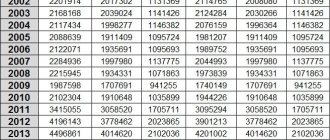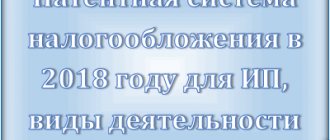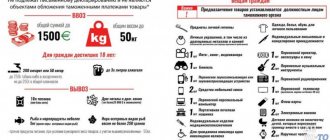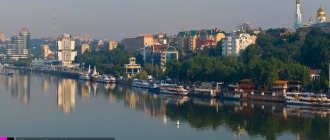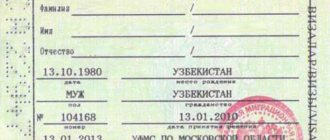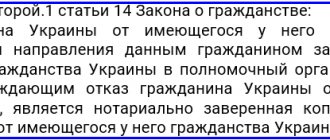New migration concept - an attempt to catch up with yesterday - expert
The concept of state migration policy for 2019–2025, approved by the president this week, was developed against the backdrop of an increasingly threatening demographic situation in the country. Several years of slight natural growth in Russia's population were again replaced by its natural decline, which last year amounted to 134.4 thousand people, and in the seven months of this year - 92 thousand people. According to a number of forecasts, in 2021, Russia may experience a population decline for the first time since 2009, since migration growth no longer compensates for its natural decline. The adopted concept of migration policy presupposes a reduction in population by 2025 to 142.8 - 145.6 million people against the current approximately 147 million. This picture naturally leads to the need to stimulate external migration into the country, which Russian demography experts spoke about another 15 years ago. −20 years ago. Therefore, the document became a belated recognition of those realities that were predicted back in the nineties, senior researcher at the Faculty of Geography of Moscow State University, managing partner Alexander Panin .
Did you like the Concept of Migration Policy? Is she wealthy from the point of view of a demographer?
I liked the concept. The document was discussed for more than a year at various venues, including in the scientific community, that is, it was not a hardware development that was simply brought to the attention of others. But the concept is clearly overripe - it would have been an excellent document for 1995 or 2000. But it’s also good that Russia has finally realized that it is losing the global competition for migration. Previously, this was understood only by scientists who professionally dealt with this problem - Zhanna Zayonchkovskaya , Anatoly Vishnevsky , Leonid Rybakovsky and others, in a word, Russian gurus in the field of migration and demography. But until some point the authorities didn’t really listen to them and didn’t believe at all that we needed to fight for migration flows. And only now has it become clear to everyone, even non-specialists, that without a migration influx the situation in our country will not improve on its own. Last year, the migration growth of the population covered the natural decline, but this year, most likely, such a result will not happen. Despite the continued positive migration growth, the phase of active depopulation is increasingly noticeable - Russia is losing population at full speed!
In your opinion, are there any negative aspects in the concept and how much will they affect the further implementation of migration policy?
It is significant that the concept is focused mainly on attracting compatriots. But we must understand that this group had high immigration potential in the 1990-2000s, when a significant part of our people found themselves outside the perimeter of Russia. But those of them who wanted to return to Russia faced a lot of problems, including obtaining citizenship. In this regard, we can quote the document: “In the 1990s, about 1.5 million people received the status of refugees and forced migrants in the Russian Federation, but the legally enshrined social obligations towards them have not yet been fully fulfilled.” In the nineties, attracting compatriots was really important - especially from Central Asia. But now this flow is no longer so strong, its resource is running out.
As for our western neighbors - Ukraine, Belarus, Moldova, a new pole of attraction for migrants has appeared there - the European Union. Back in 2014-2015, for obvious reasons, there was an active influx of migrants from Ukraine to Russia, although it is quite difficult to calculate - from 1 to 2 million people arrived. But now the situation has changed: citizens of Ukraine have received the right to visa-free entry into the European Union. It is clear that there are a lot of restrictions there and we are talking about tourist trips, but in any case the vector is not directed to Russia. So, in many ways, the migration concept is a document whose purpose is to fight for potential migrants still remaining in the post-Soviet space. But these, I repeat, are belated decisions. If they had had the same migration doctrine in the last and decades before, it would have been as acute as it is now, the issue of depopulation would not have arisen, and the “pension reform” is indirectly related to it - raising the retirement age is largely due to the lack of labor resources.
Therefore, I think that the question should have been posed even more sharply: we need almost any migrants, not just compatriots, we will welcome everyone who meets our criteria. The concept states that “the main source of replenishing the population of the Russian Federation and providing the national economy with labor resources should remain its natural reproduction,” and migration policy is considered as “an auxiliary means for solving demographic problems and related economic problems.” But in reality, it is migration, both currently and in the future, that is the main source of replenishment of Russia’s population.
Senior Researcher, Faculty of Geography, Moscow State University Alexander Panin
The concept provides estimates of the future population of Russia until 2025 (“high” and “medium” options) - from 142.8 to 145.6 million people. How adequate, in your opinion, are these calculations and will the document help ensure that the “high” scenario is realized?
You can count in different ways, but the problem is that, for various reasons, we simply do not have normal migration statistics. Rosstat takes into account all migrants who have been on the territory of the Russian Federation for nine months, but it is not a fact that these people will not leave the country after this period. We still don’t know, for example, how many of our citizens leave for permanent residence abroad every year. We do not know about the internal movements of people, we do not know the structure of migration, its spatial features, and much more. Therefore, it is, of course, possible to project an increase in population, including through migration growth, but for now the signed concept is only a top-level document. It is completely unclear how it will be implemented, what tools will be used, etc. Therefore, the question of the mechanisms for implementing the concept is the most important one. For the last 25 years we have lived in a regime of prohibitive immigration, and have always protected ourselves from this phenomenon. Now there may be some relief. Although we must not forget that migration management is still under the jurisdiction of the Ministry of Internal Affairs.
But today we live in different realities. Migration is one of the main areas of global competition, just like technology, healthcare, and education. Today, the countries of the world compete primarily for people, and not for oil or gas, and the better a country can offer conditions for people, the higher the quality of migrants and the potential for economic development. So the adoption of the concept right now looks like an attempt to catch up with this trend. But whether the car will turn in the other direction is still unclear to me.
The concept has a remarkable wording: “The emigration outflow from the country continues.” Is this the first time that the authorities have officially acknowledged that people are constantly leaving Russia?
Rosstat has always recorded this flow; data on those who left Russia are published regularly, and, at first glance, their number is small. In fact, no one knows how many people go abroad for permanent residence - they do not hand over their passports. There are quite sophisticated estimation techniques based on the frequency of border crossings, but they require access to relevant data. But the fact that people are leaving, and this is a stable trend, can no longer be ignored. Previously, the authorities tried not to talk loudly about this. Experts have different estimates of how many people are emigrating, but the figures given do not have clear justifications. I would venture to guess that this is in the region of 100-150 thousand people a year - again, it all depends on how you count and who you call emigrants. But the fact that educated youth from Russian capitals have such a vector is absolutely no secret.
Was it right to combine internal and external migration within one document?
It seems to me that we should generally rejoice at the very appearance of this document in such an edition and with such wording. Perhaps separating internal and external migration is the task of lower-level documents. I would go exactly this way, making a whole series of documents on internal population movements with a detailed description of the methodology for counting migrants.
Does the concept contain any indication that the methods for calculating migration flows will change? The question is not really theoretical. For example, Krasnodar was recently officially recognized as a city with a population of one million, although the fact that a million people live there was confidently said ten years ago.
Yes, there is such a point in the concept - “expanding the use of information technologies to analyze the migration situation and ensure the implementation of the state migration policy of the Russian Federation.” But we must proceed from the fact that we do not have full-fledged migration statistics at all - we should speak about this extremely strictly. And the data that Rosstat operates does not stand up to criticism at all. The system for recording migration flows is not only poorly implemented at the municipal level - it does not make it possible to assess the age or ethnic structure of migration flows. At the same time, migration should be built in as one of the factors in Russia’s spatial development strategy, which is now being actively discussed, for example, in the formation of agglomerations. But this cannot be done without assessing commuter migration and the number of migrant workers - and these statistics simply do not exist. In the expert community, you can often hear about Big Data technologies, but these statistics do not have official status, and the calculation mechanisms themselves require deep scientific understanding. Now there is an urgent need to establish migration registration at the settlement level, as has been done in many countries. In the absence of normal statistics, we, scientists and experts, have to invent our own ways of counting migration flows, and I cannot say that this is correct.
Can you provide any data from your own research that either diverges from official data on migration or is not recorded by them at all?
For example, our research in the North Caucasus shows completely different scales of migration. For example, if in Dagestan official statistics give the size of the migration outflow in the region of 30-50 thousand people per year, then these figures can be safely multiplied by three - and you will get the real picture. Rosstat is able to record only a relatively small part of migration traffic - people who left and became fully legalized in a new place, officially registering there and going through all the documents. The statistics do not see the rest. At the same time, migration has a stepwise, replacement character: from rural areas of the same Dagestan, people are drawn to Makhachkala, many second- and third-generation Makhachkala residents try to move to Moscow, Pyatigorsk or Krasnodar, and then some of those who moved to Moscow go abroad. But I don’t see a clear understanding of this quality of internal migration in the concept, although this is precisely the key thing for spatial development. Until we understand how our population is moving within the country, we are unlikely to be able to correctly prioritize this development.
The concept generally talks about some unfavorable trends in internal migration, about the low territorial mobility of the Russian population. In this case, who is buying housing in the Moscow region or Krasnodar region?
This, again, is a cost of existing statistics - people often do not get legalized in a new place, and the state does not see them. In addition, people are afraid of migration registration - this comes from Soviet times: many people think that if they are counted, something bad will happen to them. Another situation is when difficulties arise in obtaining registration and registration: a person comes to a new place, rents housing, gets a job and does not have official confirmation of actual residence, including due to the reluctance of persons providing rental housing to register them . By the way, this is one of the reasons for the low turnout in the elections in Moscow.
Ultimately, the most important thing in any country is its people, and if we don’t know how many there are and where they live, we don’t know much about the country. Closing your eyes or pointing your fingers at the sky is clearly not appropriate here. For example, we do a lot of mapping of demographic and migration processes, and when we combine the results obtained with maps of the location of investment projects in the regions, it immediately becomes noticeable that when planning “construction projects of the century”, in fact, people are not thought about. We estimate that more than 60% of large infrastructure projects are aimed at exporting resources, and those projects that seem to increase the connectivity of the country do not directly affect specific cities. You don’t have to look far - look at the projects implemented before the World Cup. If we take airports, then everything was done correctly, but the actual sports infrastructure in many cities is completely unclear how it will be used, what to do with public spaces that suddenly turn out to be empty, the transport system, etc.
Projects “not for people”, focused on the export of raw materials - this is a story about the eastern regions of the country, where large investments seem to have been made, but people continue to leave. However, the concept still sets the goal of “ensuring a migration influx of population to the regions of Siberia and the Far East,” this time by 2026. How substantiated are these claims?
In the existing coordinate system, it is, unfortunately, almost impossible to increase the population of the Far East. All management decisions like the “Far Eastern hectare” do not fundamentally change the problem and cannot change it. Now in the Far East the creation of priority development territories (ASEZs) has begun - this is a cool topic, but the period for the implementation of such projects is decades, as evidenced by all world experience. And people are leaving, cities are emptying right now.
Russia, as Berdyaev seems to have written, is still “bruised by space,” and the scientific understanding of this space has always been ahead of the managerial one. Managers do not measure the problems they face by space - they look at numbers, but they are, ultimately, always tied to a specific point on the map. You arrive at this point - and there is a fence, and there is nothing behind the fence. But the very fact that now they have at least begun to think about it gives some hope for changes in attitude towards space, because before this did not exist at all. Even 15-20 years ago, a whole chorus of demographers said: our small generation of the nineties is entering childbearing age, we still have not overcome the consequences of World War II, raising the retirement age, if it is not carried out now, will be painful in the future, etc. It turns out that we have reached the time when it is no longer possible to ignore these issues.
But it is very important that the migration concept is consistent with other strategic documents. For example, in the spatial development strategy, which is now being actively discussed, a lot is said about agglomerations, about infrastructure, but nowhere is it convincingly said about mobility, migration, connectivity of territories, about the huge disproportions in infrastructure spending in different regions. No one is trying to link these things together: megaprojects and the ambitions of top officials exist in their own dimension, and people are left to their own devices. This does not fit on a single map, plus there are no interregional and intermunicipal connections, although for people there is no such thing as the border of regions or municipalities - they calmly cross them if there is work in a neighboring city or region. You don't have to be a great scientist or expert to see all these disparities just by looking at a map.
Nikolay Protsenko
About types of migration in the Russian Federation
Officially, the migration legislation of modern Russia was founded on December 12, 1993. Along with it, several resolutions, bills, intergovernmental agreements and regulations were later adopted regulating the movement of foreigners in Russia. It is important to note the Federal Law “On the procedure for leaving the Russian Federation and entering the Russian Federation” dated August 15, 1996 No. 114-FZ, “On Citizenship of the Russian Federation” adopted on May 31, 2012 No. 115-FZ, as well as “On the legal status of foreign citizens in Russia” dated July 25, 2002 No. 115-FZ. The main concept of the approved laws is to provide the rights of the country's residents to move freely and choose their place of residence. These processes are monitored by the migration service. It is obliged to suppress any violation of migration legislation.
Understanding all the legal nuances and issues on your own may not be easy. Initially, you need to know what migration law consists of at the legislative level, the existing types of migration, their differences, the impact of the economy, demography and social stability of the Russian Federation. Conventionally, migration can be distinguished according to the following criteria:
- The reason for moving, when people make a difficult decision, is forced by a number of factors, including family troubles, political situation, military operations, difficult economic situation, etc.;
- Duration of stay, when foreigners enter Russia for permanent residence or temporarily, with the possibility of subsequent departure to their homeland;
- Organizational factor, depending on the specific circumstances that make the process forced, individual or mass;
- Set goals, when the cause may be external and internal factors. In the latter option, a person decides to change his place of residence within the country, without traveling abroad.
All of the above options take into account the migration law of the Russian Federation. Separately, it is worth dwelling on labor migration. It can be applied to each of the listed cases and differs only in its focus. Its main idea is to find the optimal workplace with appropriate wages. Foreigners can find employment in Russia after concluding a contract, obtaining a labor patent or obtaining a permit. Immigrants from states that are members of the Customs Union are provided with special privileges and benefits.
Specifics of Russian migration legislation
The state migration policy of the Russian Federation is a series of actions and laws aimed at regulating the process of movement of foreigners within the country and beyond its borders and their adaptation to new conditions. A separate area of it is a special program designed for the voluntary resettlement of compatriots. The bill adopted in 2006 showed that during the 6 years of its existence, tens of thousands of people took advantage of it, which is why a separate decision was made on its perpetual status.
Russian migration law makes it possible for anyone who meets certain criteria to enter the country for permanent residence on preferential terms. The corresponding category of citizens includes those who have roots in the USSR or the Russian Federation, as well as relatives on the territory of our country. Applicants who are fluent in Russian, have no problems with the law, and have a positive reputation are provided with additional benefits and privileges.
State migration policy provides for the need for the applicant to apply to any diplomatic mission of Russia on the territory of other states or at the place of residence to the Federal Migration Service. You can obtain the desired status if you have an identity card, the necessary supporting documents and reasons. Typically, a decision on each case is made within 21 days, with the issuance, in case of a positive verdict, of a program participant certificate.
The current migration policy of the state is very loyal to former compatriots and migrants, providing them with all kinds of bonuses, state support, separate financing, payment of allowances and benefits (Resolution of the Government of the Russian Federation of March 24, 2003 No. 167). Maximum privileges are achieved by those who agree to resettle in priority areas of the Russian Federation, a list of which can be found at any branch of the Federal Migration Service. It lacks densely populated areas, in particular the capital, St. Petersburg.
